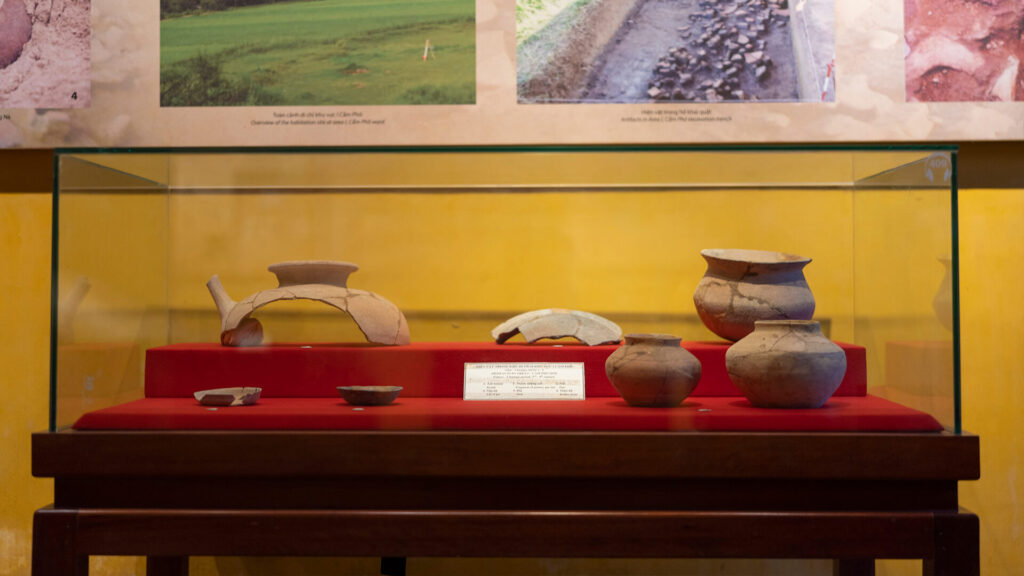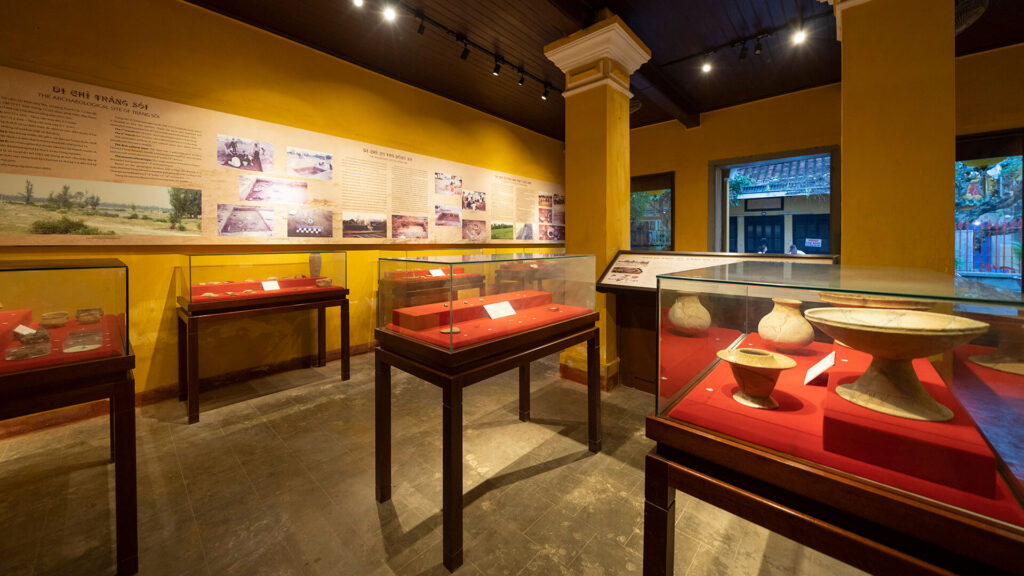Located in the heart of Hoi An Ancient Town, the Sa Huynh Culture Museum is a must-visit destination for those who love history and wish to explore the cultural roots of Vietnam.

HISTORY OF THE MUSEUM
SSa Huynh is a locality in Quang Ngai Province, and the term Sa Huynh Culture refers to an entire prehistoric culture that flourished across Central Vietnam. This culture stretched from Quang Binh to Ninh Thuan and Binh Thuan provinces, dating from the 2nd century BCE to the 2nd century CE – about 2,000 years ago.
Archaeological discoveries in Hoi An – such as Hau Xa I, Hau Xa II, An Bang, Cam Pho, Trang Soi, Lang Ba, Thanh Chiem, and Bai Ong (Cham Island) – reveal that Sa Huynh inhabitants once lived, farmed, fished, and traded vibrantly with neighboring regions and even with external civilizations.
From these archaeological sites, hundreds of artifacts have been unearthed, painting a vivid picture of a community with a highly developed spiritual, aesthetic, and social life. To preserve and present this valuable cultural heritage, the Sa Huynh Culture Museum was established in 1994 and became one of the first museums in Central Vietnam dedicated to archaeology.
EXHIBITION SPACE AND ARTIFACTS

The museum impresses visitors with its elegant two-story colonial-style architecture, which harmoniously blends into the ancient urban landscape of Hoi An. It houses and exhibits more than 1,000 original artifacts, vividly reflecting the material and spiritual life of the Sa Huynh people – one of the most representative ancient cultures in Central Vietnam.
The exhibits include a wide range of everyday household items such as pots, bowls, dishes, and teapots, as well as agricultural and fishing tools like hoes, sickles, and chisels – all associated with the ancient livelihoods of the Sa Huynh people. Remarkably, the museum also preserves Chinese coins from the Wu Zhu and Wang Mang periods of the Han Dynasty, evidencing early economic and cultural exchanges between the Sa Huynh community and neighboring regions.
The museum’s collection of jewelry showcases the refined aesthetic sense and exquisite craftsmanship of the Sa Huynh people. These ornaments, made from stone, agate, and various precious minerals, include the distinctive three-knob earrings, ring-shaped earrings, and decorative bead necklaces — all reflecting a unique artistic identity.
Sa Huynh pottery is another highlight of the museum, featuring a wide array of items such as pots, bowls, plates, and teapots adorned with carved and embossed patterns that reveal the community’s rich spiritual and artistic life. Particularly striking are the jar burials – a distinctive funerary tradition of the Sa Huynh people – displayed in various forms including oval, egg-shaped, and cylindrical jars, some with lids and others without. These artifacts indicate clear signs of social stratification at the time, marking the emergence of early forms of social organization and governance.
All artifacts displayed at the Sa Huynh Culture Museum serve not only as compelling evidence of a brilliant historical period but also as important contributions to understanding the ancient civilization that once thrived in Hoi An and Central Vietnam – a region where diverse cultural, artistic, and intellectual values converged and flourished thousands of years ago.

VISITOR INFORMATION
Address: 149 Tran Phu Street, Hoi An Ward, Da Nang City
Opening Hours: 07:00 – 21:00 (Closed on the 10th of each month)
Ticket Information: Included in the Ancient Town sightseeing pass.
- Vietnamese visitors: 80,000 VND/person
- International visitors: 120,000 VND/person
DANANG TOURISM PROMOTION CENTER